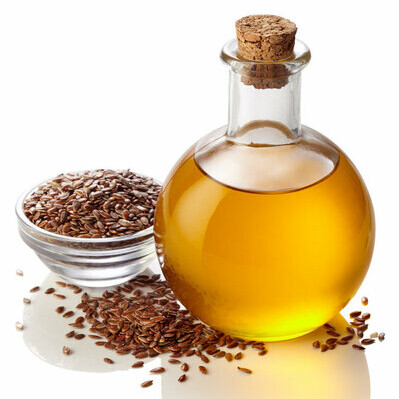
Cottonseed Oil
Also known as Linseed oil
What is Cottonseed Oil?
Cottonseed oil is an edible oil produced from cotton seeds, as a by-product of the cotton ginning process. It is characterized by its strong flavor, nutty odor and light yellow color.1
Origin
Cottonseed (Gossypium hirsutum) is an ancient crop, commonly used in the textile industry. In the 19th century, cottonseed oil emerged as an alternative cooking oil. Originally, it was introduced to the U.S market as an adulterant of olive oil, and as dilutant for lard. Eventually, this oil became one essential oil for making hydrogenated plastic vegetable shortenings.1
Processing of cottonseed oil became the cornerstone of the edible fat industry, until it lost its position to soybean oil. Severe shortages in this oil during World Wars I and II caused limited oil production.1 Today, it is used by food processors worldwide although in limited quantities. 1
Function
Cottonseed oil serves several purposes in the manufacture of baked goods:2
- Tenderizer: by coating structure building components such as gluten, and starch, thus preventing their excessive hydration
- Prevents staling: via retarding starch gelatinization
- Moistness and smoothness: by interfering with sugar crystallization and enhancing smooth sensation in the mouth.
- Release agent: aids in the removal of baked goods from molds
Nutrition
A typical cottonseed oil fatty acids profile is as follows:3
| Fatty acid | Percentage (%) |
|---|---|
| Linoleic acid | 53 |
| Palimitic acid | 24 |
| Oleic acid | 19 |
| Stearic acid | 3 |
This oil is rich in omega-6 fatty acids and is high in saturated fatty acids.
Commercial production
Cottonseed oil is produced through the following manufacturing process:4
- Cleaning: removal of foreign matter such as plant and field debris.
- Dehulling: removal of hulls using mechanical impact and air separation.
- Flaking: seeds are flaked to aid in oil extraction by passing through several rollers.
- Tempering: in cold climates, seeds are steamed cooked to 110 – 125 °C (230- 257 °F) for around 30 – 120 minutes before processing.
- Mechanical extraction: pressing to form a cake with 10% removal of oil.
- Solvent extraction: cake is extracted with a solvent, typically hexane.
- Desolventizing: removal of remaining hexane in the cake.
- Distillation: removal of the hexane present in the oil.
- Degumming: removal of phospholipids from the crude oil with an acid-oil mixture.
- Refining: further removal of phospholipids with addition of an acid mixture, and removal of free fatty acids with an alkali solution.
- Bleaching: removal of pigments and other contaminants with bleaching clay.
- Deodorization: removal of undesirable odours.
Manufacturing food grade this oil should ensure the oil is free from gossypol.
Application
Cottonseed oil can be used in several baking systems such as cakes, cookies, muffins and breads.1
Margarines and shortening made with this can be used in the manufacturing of baked goods. One advantage of using cottonseed oil is its crystalline structure (beta-prime crystals), essential for smoothness, creaming ability, and good aeration.1
Regulations
Cottonseed oil doesn’t have a specific FDA regulation. However, CFR Title 21 Part 172.860 establishes the conditions for fatty acids as food additives that may apply to cottonseed fatty acids.5
Since partially hydrogenated cottonseed oil is no longer considered GRAS by the FDA. The use of partially hydrogenated cottonseed oil is completely banned for use in food products since 2018.6
In the EU, cottonseed oil is considered to be non- hazardous by the European Chemical Agency.7
References
- O’Brien, RD. Fats and Oils: Formulating and Processing for Applications. 3 rd ed. CRC Press, 2008.
- Figoni, P. How Baking Works: Exploring The Fundamentals Of Baking Science. 2nd ed., John Wiley & Sons, Inc., 2008.
- Akoh, C. C. Handbook of functional lipids. CRC press, 2005.
- Gunstone, F. Vegetable oils in food technology: composition, properties and uses. 2 nd ed., John Wiley & Sons, 2011.
- Food and Drug Administration (FDA). US Department of Health and Human Services. CFR Code of Federal Regulations Title 21, Part 172 Food Additives Permitted For Direct Addition To Food For Human Consumption, https://www.accessdata.fda.gov/scripts/cdrh/cfdocs/cfcfr/cfrsearch.cfm?fr=172.860 , Accessed 08 August 2021.
- “Final Determination Regarding Partially Hydrogenated Oils.” U.S. Food And Drug Administration, 2020, https://www.fda.gov/food/food-additives-petitions/final-determination-regarding-partially-hydrogenated-oils-removing-trans-fat. Accessed 08 August 2021.European Chemical Agency. “Substance Information – ECHA.” Echa.Europa.Eu, 2021,https://echa.europa.eu/nl/substance-information/-/substanceinfo/100.029.345, Accessed 15 August 2021.

